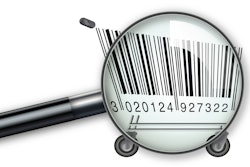
Lately, it’s been difficult to shop for meat, eggs, and dairy. Combing the aisles of grocery stores may create frustration when shelves that once housed perishables are now bare. But what about today’s global economy is creating these shortages, and what solutions can organizations implement to mitigate challenges moving forward?
Why are there food shortages?
There are a variety of reasons to explain the uptick in food shortages present across the United States and beyond. These range from global affairs and the climate crisis to the lack of protective technology and the current culture around labor.
The War in Ukraine. The conflict in Ukraine is having dramatic effects on the global supply chain, namely food logistics. Ukraine and Russia are the suppliers of 30% of the world’s wheat and barley exports. The continued conflict raises questions about whether crops will get harvested and exported. As suspected, the war has closed ports, shut down oil seed crushing businesses and created export licensing prerequisites for a variety of goods.
All these obstacles are detrimental to Ukraine’s agricultural exports, which made up 41% of Ukraine’s exports in 2021 and totaled nearly $30 billion. Moreover, agriculture’s share of Ukraine’s GDP has surpassed 10%, the greatest increase of any division of Ukraine’s economy. The future of grain, wheat, and vegetable oil exportation is uncertain, creating global anxiety across the supply chain.
Inclement weather. Due to the persistence of climate change, there have been more and more storms, leading to road shutdowns that affect transit of food supplies in addition to crop production. Therefore, specific fruits and vegetables could be scarce, along with other food items made from produce.
Cyberattacks. Food industry plants have recently been affected by cyberattacks, specifically ransomware attacks. For example, JBS was forced to pay $11 million to a hacker. These breaches may be due to the work-at-home model, where employees are using their own laptops and smartphones, sometimes connected to free internet, to do their jobs and conduct what should be more secure transactions. Moreover, companies in the food industry tend to use older legacy systems, which are more prone to attack.
Raw material scarcity. Since the start of the pandemic, raw materials such as aluminum, paper and plastic have grown very scarce, forcing brands to delay deliveries. Much of the aluminum shortage is due mostly to demand -- more companies switching to cans as more people are staying home and buying canned drinks instead of going out. Plastic and paper shortages are also due to increasing demand and pandemic-era production reductions. Moreover, labor shortages due to the Great Recession and COVID-19 pandemic have caused myriad delays in production cycles. However, 2021 brought good news for production: the United States aluminum can manufacturing increased by 6% in 2021, with a creation of over 100 billion cans.
Click here to hear more about disruption from the Russia/Ukraine war:
Challenges in food logistics
Here are the specific challenges facing food logistics.
Need for tracking. The tracking of products in all sectors of the supply chain has become of paramount importance. But in the food sector, lack of traceability can lead to serious health consequences. Food shippers and end consumers expect products to adhere to specific food quality standards and adequate information regarding the safety of its consumption, all of which can be given through tracking.
Unfortunately, most foodborne illnesses begin or get worse along the supply chain. Therefore, retailers must communicate visibility into every aspect of a food product’s journey, not only to keep customers safe but also to mitigate possible legal action due to a spoiled product.
Regulations. There are a growing number of regulations that have increased shipping rates and impeded the number of drivers available to carry goods. These rules have, therefore, led to fewer fresh produce and impacted food safety as well. One regulation that has been particularly challenging to food logistics is the ELD mandate. This mandate requires carriers to install electronic devices to track drivers’ service hours week to week. Ostensibly, the mandate will make logging hours more efficient and this documentation more accurate, in addition to quickening roadside inspections, saving time and decreasing costs on deliveries and pickups.
However, the mandate has negative consequences. For example, many next-day delivery lanes will be affected because drivers now have fewer operating hours to drive more miles, impacting delivery times. Furthermore, there will be a growing need for team drivers, forcing the customer to pay more. Longer hauls will be less desirable for a single driver due to extended time the truck is covering a load.
Many traditional next-day delivery lanes will be impacted due to fewer operating hours available for drivers to squeeze out extra miles. It is a possibility that drivers may not be able to make next-day delivery commitments. Team drivers will become more in demand, which will, in turn, cost the customer more money to pay for two drivers. Moreover, there may be a scarcity of truck parking due to fewer working hours, which in turn could cause delays on the dock and affect carriers’ following appointments. Essentially, these rigid schedules will create less flexibility along the supply chain. Smaller carriers may also have to shut down because they can’t afford the losses or even the cost of the ELD equipment to begin with.
Food fraud. Ensuring food authenticity has not been a top priority, which, of course, makes the food system more vulnerable to fraud. One of the most famous examples of food fraud is what happened at multiple Chinese dairy manufacturers, where they diluted baby formula with melamine. Part of the problem is that there is no universal set of rules that all countries have adopted to combat fraud, making it easier for deception to occur along the supply chain. Countries are increasingly adding new regulations to avoid giant mishaps like the one in China, more countries are putting in new regulations put into place. Unfortunately, some of these may cause even more obstacles along the supply chain.
Disconnection. Disparate systems along the supply chain affect every sector, and the food industry is not unique. Considering all the separate organizations, from farmers to last mile truckers, involved in getting food onto your table, this should be no surprise. Unfortunately, these disconnections can result in the challenges discussed above. The key, then, is to improve communication across the supply chain.
Solutions
So, what can help mitigate all these challenges? In short, the key is better, more aggregated technology that touches on every point of the food supply chain, allowing each organization to stay informed about the freshness of their food, where the food is and why there are delays, especially those resulting from regulations and the authenticity of the food.
Moving so much product across various environments, including borders, climates and time zones proves to be a huge operational difficulty. However, inventory management software could be the solution for all these disparate parts of the supply chain, allowing organizations to forecast needs dependent on product and geographic location, thereby preventing overstock or stockouts. Factories and manufacturers can make informed decisions about how much product to make and then connect with other parts of the supply chain, including other channels a retailer may sell their products on.
A robust inventory management system can offer real-time data and let organizations, such as restaurants, know when stock is getting low, enabling them to order more product before it runs out. Businesses can also use these systems to forecast seasonal trends, so they know what ingredients to order at which time of year.
Overstock can also be an issue, since food businesses may over-buy, not knowing what they already have on hand. However, inventory tracking software can give consolidated, real-time data, including expiration date tracking. This is especially important for suppliers, who will know how much of a certain product to grow or produce. All of this also allows for less waste, creating a more sustainable supply chain. Selling on different sales channels, on disparate systems, can make it even more challenging for businesses to conduct sales. A good inventory management solution, however, will integrate all the sales onto one platform, including sales history, preventing poor communication across different supply chain operators.
So, what about spoiled or potentially fraudulent food? The average food recall cycle takes about seven days from finding out an item is contaminated to identifying the source. This long delay is due to a lack of visibility and automation, in addition to opaque data. More automated and connective software is needed, integrating the fisher or farmer to the processor, distributor, wholesaler and retailer’s systems.
Large companies that have already utilized this kind of software have been able to minimize the recall process to mere seconds. The moment an item is found to be contaminated, the FDA can issue a recall to every touchpoint in the supply chain, ensuring that as few customers as possible are affected. A blockchain model is useful here, allowing anyone in a food chain to utilize an immutable, secure ledger and view and change it as needed. Blockchain can also help when it comes to fraudulent foods. Blockchain’s decentralized and distributed ledger systems enable participants to check and validate the authenticity of a product, activate or validate the product across the global supply chain and determine fraud.
Worried about more hacks? Once information is stored on the blockchain, it cannot be deleted or changed. This kind of interface enables an ongoing ledger of information across the supply chain and mitigates theft, since a blockchain solution keeps permanent records of products’ data, discerning thievery at any part of the supply chain. Additionally, blockchain can allow a customer to see the entire journey of their product, which leads to retention. This traceability is key to improving customer relationships.
In essence, the food logistics industry is facing shortages stemming from many challenges. But with a pivot to better software, many of these problems can be mitigated moving forward.

















